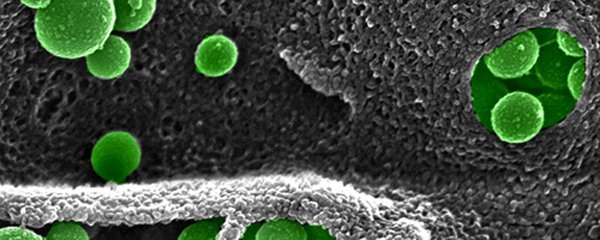
Nanoparticle Protein Interactions
For the delivery of bioactive compounds such as therapeutic proteins/peptides siRNA or drugs to a specific cell or organ, it is not only of great importance to improve the stability of the therapeutic agent during passage through the blood stream, but also to extend the circulation time in the body. Consequently the interaction with blood components has to be controlled to limit aggregation processes. Furthermore, uptake in blood cells like macrophages has to be minimized. Only then the drug can reach the target cells.
Over the years it has become clear that proteins from blood, plasma or serum will change the surface properties and convert the “chemical identity” into a “biological identity”. Control of protein adsorption onto nanomaterials is especially important in the biomedical area. We therefore run a quantitative liquid chromatography coupled to a high-resolution mass spectrometer (LC-MS) in a proteomic approach. By this we can identify out of thousands or proteins the most prominent and important proteins of this biomolecular corona. Our goal is the defined analysis of protein-polymer interactions together with the group of Dr. Svenja Morsbach by applying a combination of different physicochemical techniques including dynamic and static light scattering (DLS/SLS), isothermal titration calorimetry (ITC), asymmetric flow field-flow fractionation (AF-FFF) and unfolding measurements by differential scanning fluorimetry (nanoDSF). A combination of these analytical methods allows us to address multiple aspects of protein-polymer interactions. Using ITC and nanoDSF we are able to monitor binding kinetics and unfolding with specific proteins.
Understanding the details of the formation and the composition of the protein corona and also the consequences that are incurred by the specific proteins needs to be investigated further. The defined analysis of nanoparticle interactions might allow pre-selection of nanoparticles for in vivo application.